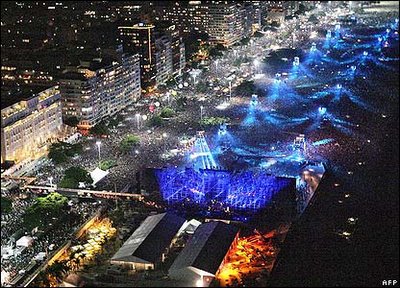Following the session at Casuality on Designing casual games (see previous post), I had an epiphany based on something Jason touched on in his presentation.
He cited some of the positive feedback Popcap received in testing bejeweled when they added a zero to the scores granted (e.g. going from 1 point per 3-stone match to 10 points per match).
That got me thinking. I used to own a few vintage arcade games, one of which was an old 1967 Woodrail pinball called Twinky. I used to prefer some of the older, simpler pinball games from the early 60’s through to the early 70; 80’s and 90’s. For what it’s worth, 8-ball by (I think it was Bally, but I'm not certain) was I think my favorite.
Anyhow, one thing that is apparent when looking at these games over the years is the “score inflation” that occurred. Games in the early sixties had bumpers, gates and buttons worth 1, 5, and 10 points. In the late sixties, this turned to 5, 10, 20 and perhaps 50. Move through the 70’s, 80’s and 90’s, this kind of “point inflation” continued.
A good final game score for those generations of titles might have been 5000, 50,000, 1 million and 10 million or so, respectively.
Clearly, there was something behind this.
One could argue that if game A offered more points than game B, it would make players feel better and that positive reinforcement would lead to repeat plays. Thus competitors building machines would increase their score more than the next guy.
However, as the inflation continued, it reached absurdly high levels, where points of 100's of millions were attainable. I submit that this became one of many contributing factors in the decline of pinball (admittedly a minor factor when compared to everything else).
So, here’s my epiphany, which I will state in the form of a rule.
Kim’s First Rule of Casual Game Design: Points awarded should correlate to real-world currency and the reward for an accomplishment should correlate to the value to the user.
OK, so what does this mean?
First off, when I say “first rule” I don’t mean most important. I just mean it’s the first I’ve come up with :-)
Secondly, when I say correlate to real-world currency, I mean the basic unit. E.g. 1 point = $1.
Finally, when I say value to user, I mean that you should think about things like “if these points were dollars, how would I feel about accomplishing that act and winning that amount?”
Another way to look at this: The high score attainable for a game should equate somewhat to the prizes awarded by a TV game show. Since the “grand prize” awarded by a game show might vary somewhere between “winning a new car” and “getting rich”, game scores should fall somewhere in the same range. In 1960, a new car cost a few thousand dollars. Today, perhaps $25,000 to $50,000. The “getting rich” number used to have a range of $50,000 to $250,000 (e.g. the $64,000 pyramid was a popular TV show). Later it meant being a millionaire, but as of late even that isn’t as significant an amount (e.g. Austin Power’s Dr Evil’s “one meeeeleeeonne dollars!!!”)
Taking this into consideration, I’d argue that a good “quickie” casual game should have a high score for a good player up around the 20k to 50k point range, and that a game requiring some time investment and learning complexity might be OK having a point system that allowed for high scores of 1 million to 10 million.
Points. Examples like Zuma, Luxor bear out the former; and maybe examples like geometry wars bear out the latter? I’m sure there are also examples that contradict.
One more thought: There may be another benefit to using such a ‘real life’ metric to a scoring system. It’s analogous to how many (including me) think it’s a good idea to build any simulator (for graphics/physics) scaled to real-world units so that you can better judge if things are working right.
Please post comments. I’m curious if people agree/disagree.
And if you do agree, what does it mean when localizing games to other countries?


 Which, inside, was just a great little venue. A 3-story high old theatre-type venue with a huge pipe organ on the wall. I didn't get the greatest shot inside, but this should give you and idea:
Which, inside, was just a great little venue. A 3-story high old theatre-type venue with a huge pipe organ on the wall. I didn't get the greatest shot inside, but this should give you and idea:
